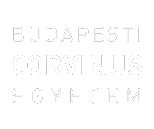He, Songling (2020) Market risk management and commercial applications in the context of the 5G era(Take the insurance industry as an example). BA/BSc szakdolgozat, BCE, International Study Programs. Szabadon elérhető változat / Unrestricted version: http://publikaciok.lib.uni-corvinus.hu/publikus/szd/He_Songling.pdf
|
PDF
- Requires a PDF viewer such as GSview, Xpdf or Adobe Acrobat Reader
506kB |
Szabadon elérhető változat: http://publikaciok.lib.uni-corvinus.hu/publikus/szd/He_Songling.pdf
Absztrakt (kivonat)
The title of my thesis is “Market risk management and business applications in the context of the 5G era (taking the insurance industry as an example)”. Chapter 1: Introduction, I briefly introduced the performance of 5G. The performance goals of 5G are higher data rates, reduced latency, energy saving, cost reduction, increased system capacity, and large-scale device connections. 4G networks have brought tremendous changes to people’s lives, and the arrival of 5G will affect the production and life of all mankind more widely. In the chapter 2: literature review, I reviewed the development and format change of 5G technology, risk and risk management (including the concept of risk, risk types, and risks faced by insurance companies), and the impact and application of 5G technology on VR and AR. Although 5G technology is a key technology for improving the Internet of Vehicles and the Internet of Things, and a driving force for future economic development, China's pace of promoting 5G technology globally has been restricted. Chapter 3 is Industry overview, in the first part, I introduced the development of 5G technology and the history of wireless communication technology from 1G to 5G, the essential changes in the 5G format, and the trend of business model transformation of Internet companies in the 5G era. The second part is the impact of 5G technology on AR and VR. I gave a technical introduction, head-mounted display device comparison and macro environment analysis-PEST analyzed the development of China's VR technology industry. The third part is the development status of traditional insurance business models, the fourth part is specific types of Internet insurance business models, and the fifth part is the Internet of Things, including the definition of the Internet of Things and the architecture of the Internet of Things. 5G technology has the characteristics of high speed, high connection density, low latency, high coverage, high throughput, high security, and high quality. In the future, 5G will mainly provide basic network virtualization and network distribution. Segment technology and network fragmentation have brought substantial changes. Chapter 4 is Methodology. This thesis uses Primary research method, professional interviews method (interviews with two industry experts), Brainstorming, Delphi method and Case analysis method. These methods have their own advantages and disadvantages. If I have enough resources, and Time, I hope more experts can be interviewed. The fifth chapter is the results and analysis. I first analyzed the interviews with two experts, Mr. Liu and Professor Kong. Through interviews and research, I found that the 5G era faces many risks and challenges. In terms of policy, the birth of 5G technology is in a critical period of international conflicts and wireless technology upgrades. All countries hope to enjoy the benefits of 5G core technology, but the rise of China in the field of 5G technology has exacerbated conflicts and disputes in the world. Faced with this problem, China should firmly strengthen the overall idea of cooperation with the world and promote a unified global 5G standard. Seize the development opportunities of the “Belt and Road” to open up a broader market. In the field of digital economy, the arrival of the 5G era poses a severe challenge to the principle of network neutrality. Operators should actively seek government support, make full use of central finance, local fiscal funds and social capital, and give priority to expanding 5G network infrastructure construction in hotspots. In terms of social governance, as 5G spawns rich Internet formats, platform service providers must pay more attention to the quality of platform products, prevent counterfeit and shoddy products, false propaganda, etc., and improve platform management mechanisms. At the same time, in view of the imperfect 5G application terminal equipment, high price, low return on investment, and immature enterprise market applications, the Chinese government should formulate a 5G development roadmap and form a national strategic document. In the 5G era, China’s Internet insurance business model must further expand services on the basis of the original business model to achieve company transformation. Faced with the lack of motivation in traditional insurance business models and the trend of seeking transformation, insurance companies should establish insurance e-commerce platforms with large traffic and large data volumes to form a business model based on the Internet of Things and big data analysis. Enterprises must have Internet thoughts and introduce Internet technology into business management. For example, by using cloud technology, companies can send designated content to internal employees in real time to achieve rapid processing results. Using the momentum of standardized management can help companies collect and organize various data in the most effective way. Through data analysis, understanding the company's various product indicators can formulate more appropriate strategic guidelines, make full use of resources and increase company revenue.
| Tétel típus: | BA/BSc szakdolgozat |
|---|---|
| Témakör: | Pénzügy Innováció, tudásgazdaság |
| Azonosító kód: | 14006 |
| Képzés/szak: | Business Administration and Management |
| Elhelyezés dátuma: | 13 Okt 2021 10:40 |
| Utolsó változtatás: | 02 Dec 2021 09:12 |
Csak a repozitórium munkatársainak: tétel módosító lap

